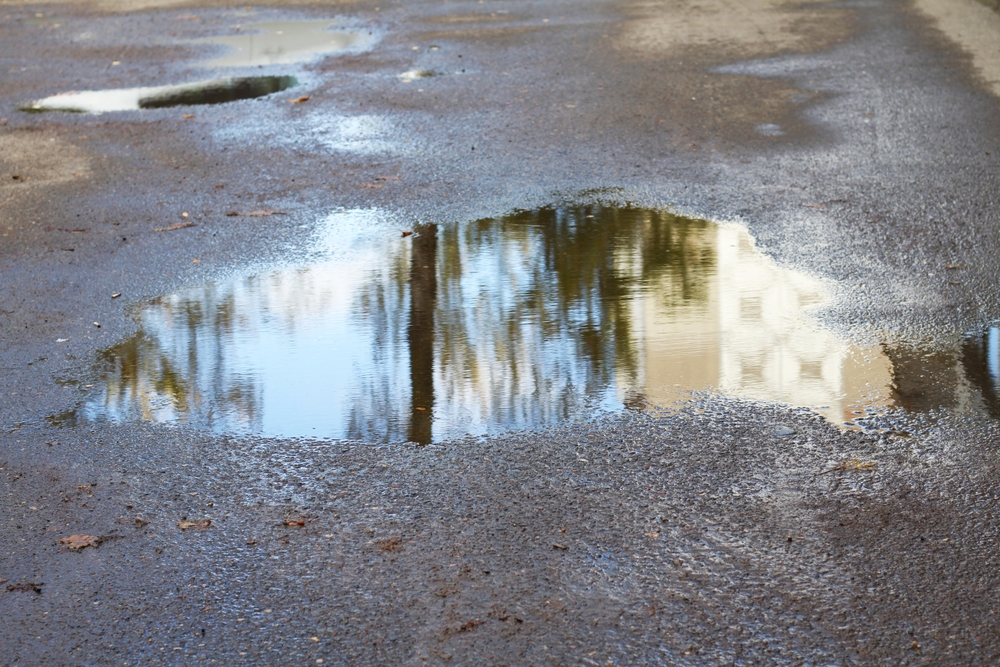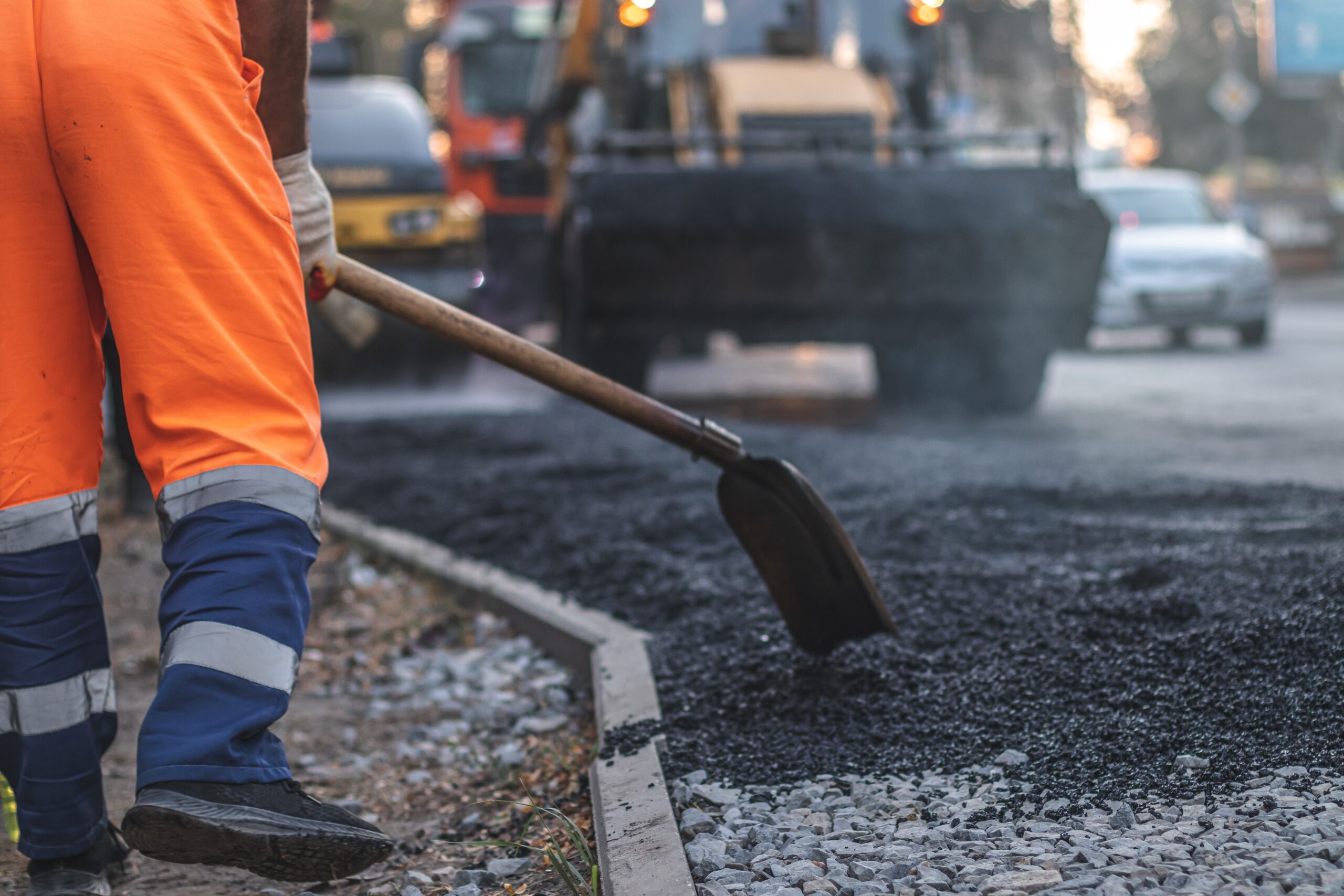
Asphalt is a resilient surface that forms the backbone of roads, driveways, and parking lots. However, weather changes play a significant role in its gradual breakdown. From scorching heat to freezing winters and relentless rainfall, various weather conditions impact the structural integrity of asphalt, causing cracks, potholes, and surface deterioration.
Understanding how weather influences these changes is essential for timely and effective maintenance. At Asphalt Coatings Company, we provide expert solutions to protect your pavement year-round from these damaging effects.
What Is Asphalt Made Of & Why Does Weather Matter
Before diving into the specifics of weather damage, it helps to understand what asphalt is made of and why it is vulnerable.
Asphalt pavement is composed primarily of two key components: aggregates (crushed stone, sand, and gravel) and a binder, typically bitumen, a sticky, black, viscous material derived from crude oil. The binder acts as glue, holding aggregates together to form a durable surface.
While aggregates provide strength, the binder’s properties are crucial to asphalt’s flexibility and waterproofing. Weather influences both, but particularly the binder, which can degrade through oxidation, moisture intrusion, and temperature fluctuations.
When exposed to oxygen and ultraviolet (UV) radiation from the sun, the binder begins to oxidise, losing its flexibility and becoming brittle. Moisture penetration can weaken the bond between aggregates, while repeated expansion and contraction due to temperature shifts cause micro-cracking. Over time, these effects combine to break down the asphalt surface, compromising its durability.
Heat & UV Exposure: The Summer Asphalt Threat
Hot weather and intense sunlight are two of the biggest culprits behind asphalt damage. Understanding their effects can help homeowners and businesses anticipate maintenance needs.
Softening & Rutting from High Temperatures
When temperatures rise, the asphalt binder softens. This softening means the surface is less able to support heavy loads, leading to rutting, permanent indentation, and grooves where vehicles frequently pass. Rutting is not only unsightly but also compromises pavement safety by creating uneven surfaces.
Oxidation: UV Rays Versus Binder Flexibility
Sunlight emits UV radiation, which causes chemical reactions in the asphalt binder. This oxidation breaks down the binder’s molecular structure, making it brittle and prone to cracking. Over time, oxidation also causes asphalt surfaces to fade and lose their black colour, making them look old and worn out.
How Asphalt Coatings Company Protects Your Pavement
At Asphalt Coatings Company, we use professional-grade sealcoating to shield your asphalt from UV rays and heat damage. Sealcoating restores flexibility to the binder and forms a protective barrier against oxidation, prolonging the lifespan of your pavement by years.
Cold Weather & Freeze-Thaw: Asphalt’s Winter Enemy
Cold weather presents a distinct set of challenges, often resulting in visible cracks and potholes.
Cracks from Cold Temperatures
As temperatures drop, asphalt contracts and becomes less flexible. This contraction can cause thermal cracking, particularly if the pavement is already brittle due to oxidation. Temperature impacts cracks, allow water and debris to penetrate the surface, accelerating deterioration.
How Freeze-Thaw Leads to Potholes
The freeze-thaw cycle is particularly destructive. Water seeps into cracks and freezes overnight, expanding as it turns to ice and exerting pressure on the asphalt. When it thaws, the water contracts, leaving gaps beneath the surface. Repeated cycles cause the pavement to weaken and eventually form potholes, dangerous hazards that worsen rapidly if left untreated.
Timely Crack Sealing & Winter-Grade Sealcoating
Preventative crack sealing before winter is critical to blocking water infiltration. Additionally, using winter-grade sealcoats provides an extra layer of protection that is suited to withstand low temperatures and freeze-thaw stress, thereby preventing early damage.
Water, Drainage & Asphalt Deterioration
Water in liquid form is a silent but relentless enemy of asphalt. Even moderate rainfall can cause significant damage if the pavement is not properly maintained.
How Water Seeps into Cracks and Undermines the Base
When cracks or surface imperfections exist, rainwater penetrates down to the sub-base, which supports the asphalt surface. Water saturation weakens this foundation, leading to subsidence or sinking of the pavement. This undermining effect causes potholes and uneven surfaces, reducing the pavement’s load-bearing capacity.
The Importance of Proper Drainage
Poor drainage exacerbates water damage by allowing puddles and standing water to persist on the surface. Proper slope design, drainage channels, and regular cleaning prevent water from pooling, dramatically reducing moisture-related asphalt failure.
Asphalt Coatings Company’s Solution
Our team provides thorough pavement inspection, identifies drainage issues, and offers crack repair alongside drainage improvement services. This holistic approach ensures that your asphalt remains stable and long-lasting, even during heavy rain seasons.
Snow, Ice & Salt: Harsh Winter Wear on Asphalt
Winter is a demanding season for asphalt, presenting unique challenges that include mechanical and chemical stress.
Salt and Snow: Chemical & Physical Damage
De-icing salts, although necessary for safe roads, accelerate the degradation of asphalt binder by promoting moisture absorption and stripping of the binder. Salt also corrodes metal reinforcements in some pavements. Additionally, the weight of snow and ice can compact and damage the surface.
Mechanical Damage from Snow Plowing
Repeated plowing can scrape off sealcoat layers, exposing fresh asphalt to weathering and oxidation. Aggressive snow removal practices can thus indirectly accelerate pavement breakdown.
Asphalt-Safe De-icers and Gentle Snow Removal
Asphalt Coatings Company recommends using asphalt-safe de-icers and gentle snow removal techniques to minimise damage while maintaining safety. Our winter maintenance packages include these best practices to keep your pavement intact during the harsh winter months.
Combined Effects & Common Types of Asphalt Distress
Weather elements rarely act alone; their combined effect accelerates different types of distress that compromise pavement safety and aesthetics.
Fatigue Cracking (Alligator or Crocodile Cracks)
Repeated traffic load, combined with weather stresses, leads to fatigue cracking, characterized by interconnected cracks resembling crocodile skin. This indicates structural failure and often results from poor drainage and binder degradation.
Bleeding and Surface Deformation
In hot conditions, the binder may rise to the surface, causing bleeding —a shiny, sticky layer that attracts dust and dirt, reducing friction and leading to slipperiness.
Potholes from Moisture and Load Stress
As noted, water infiltration combined with traffic stress eventually creates potholes. These can cause vehicle damage and increase liability risks if not addressed promptly.
Proactive Maintenance Strategies for Long-Lasting Asphalt
Given the inevitability of weather exposure, proactive maintenance is the best defence against asphalt breakdown.
Sealcoating Every 2–3 Years
Applying sealcoating every two to three years forms a protective barrier that shields your asphalt from harmful UV rays, moisture infiltration, and heat damage. This process rejuvenates the asphalt binder, restoring its flexibility and preventing it from becoming brittle. Sealcoating also waterproofs the surface, reducing the risk of cracking and potholes caused by water damage.
Crack Sealing Before Winter
Addressing cracks before the onset of winter is vital to stop water from seeping into the pavement and freezing. Timely crack sealing prevents the expansion of cracks caused by freeze-thaw cycles, reducing the formation of potholes and structural damage. This simple yet effective maintenance step helps preserve the pavement’s integrity through harsh winter conditions.
Drainage Management
Proper drainage is crucial in preventing water from pooling on or beneath the asphalt surface, which can weaken the pavement’s underlying base.
Maintaining effective drainage systems helps prevent moisture-related damage, such as subsidence and potholes. Regular inspection and clearing of drainage channels ensure water flows away quickly, safeguarding your asphalt from long-term deterioration.
Routine Inspections After Major Weather Events
After storms, heatwaves, or heavy rainfall, conducting thorough inspections enables the early detection of emerging issues, such as cracks, rutting, or drainage problems.
Identifying and repairing damage promptly helps avoid costly repairs and extends the pavement’s lifespan. Regular post-weather assessments help keep your asphalt in optimal condition, even in changing weather conditions.
Why Professional Maintenance Matters
DIY fixes might seem tempting, but professional maintenance offers superior protection and longevity.
Trained Inspections and High-Quality Materials
Certified professionals from Asphalt Coatings Company conduct thorough inspections using industry-standard tools and apply the highest-grade sealants and repair materials.
Comprehensive Service Packages
Our services include sealcoating, crack repair, drainage improvement, and customised seasonal maintenance plans designed to fit your specific pavement needs and local weather conditions.
Real Results from Trusted Experts
Our track record includes numerous satisfied clients with pavements that have withstood weather extremes thanks to our expertise and proactive care.
Weather Effects on Asphalt and Recommended Maintenance
| Weather Condition | Impact on Asphalt | Typical Damage Types | Recommended Maintenance |
| High Heat & Sunlight | Binder softens, UV oxidation | Rutting, fading, surface brittleness | Sealcoating to protect from UV and heat |
| Freezing Temperatures | Asphalt contracts, and water freezes in cracks | Thermal cracks, potholes | Crack sealing, winter-grade sealcoating |
| Rain & Water Infiltration | Moisture weakens the base, causing subsidence | Potholes, sinkholes | Crack repair, drainage improvements |
| Snow, Ice & De-icing Salt | Mechanical wear, chemical erosion | Sealcoat damage, binder stripping | Asphalt-safe de-icers, gentle plowing |
| Combined Weather Stresses | Fatigue under load and weather stress | Alligator cracking, bleeding | Routine inspections, proactive repairs |
Frequently Asked Questions
Why does heat make asphalt rut?
High temperatures soften the asphalt binder, reducing its load-bearing capacity and causing permanent indentations known as rutting.
What is asphalt oxidation, and how can it be prevented?
Oxidation is the hardening and brittleness of the asphalt binder due to exposure to oxygen and UV rays. Sealcoating is an effective preventive measure.
How does the freeze-thaw cycle damage pavement?
Water entering cracks freezes and expands, creating internal pressure that widens cracks and causes potholes when the ice melts.
Can rain cause potholes?
Yes, rainwater penetrates cracks and weakens the pavement base, leading to subsidence and the formation of potholes.
Is de-icing salt harmful to asphalt?
Yes, salt accelerates moisture infiltration and binder stripping, thereby degrading asphalt more quickly. Using asphalt-safe alternatives is advisable.
Weather-Proof Your Asphalt with Asphalt Coatings Company Today
Weather changes are unavoidable, but the damage they cause to your asphalt doesn’t have to be. With expert care from Asphalt Coatings Company, you can protect your investment from heat, cold, moisture, and winter chemicals. Our proven maintenance plans, including sealcoating, crack sealing, and drainage solutions, extend the life and look of your pavement, saving you money and hassle in the long run. Don’t wait until cracks turn to potholes. Contact Asphalt Coatings Company now to schedule a professional inspection and tailored maintenance plan designed to keep your asphalt strong through every season.



